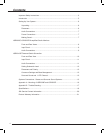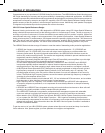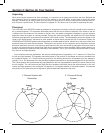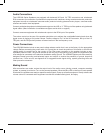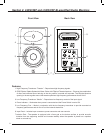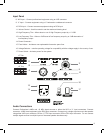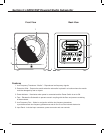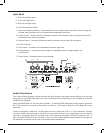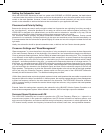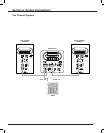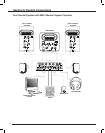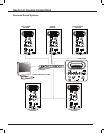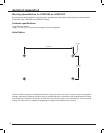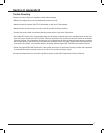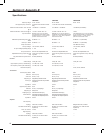
12
Setting the Subwoofer Level
When the LSR2310SP Subwoofer is used in a system with LSR2328P or LSR2325 speakers, the ideal balance
is achieved when the position of the volume control on the subwoofer is set to the same position as the volume
control on the main speakers. However, if more or less subwoofer volume is desired, you may use the volume
control on the subwoofer to achieve the balance that works best for your application and taste.
Placement and Polarity Setting
Because the human ear cannot easily recognize where low frequencies are originating from (they are said to
be “non-directional”), subwoofer placement is not nearly as critical as main channel speaker positioning. The
LSR2310SP is designed to be placed directly on the oor and not elevated or mounted in any way. Set this
switch to the setting that yields a stronger perceived bass response at the mix position.
The subwoofer should optimally be placed somewhere between the two main speakers. Precise central
placement is not necessary. Centered positioning in the room can sometimes cause unwanted cancellation, so
it is recommended that the subwoofer be placed slightly off-center and not at the midpoint between the left and
right walls.
Ideally, the subwoofer should be placed somewhere near, or behind, the front Center channel speaker.
Crossover Settings and “Bass Management”
“Bass management” is a term that refers to the practice of using a subwoofer to reproduce the bass frequencies
of the main channels. Because of the physiology of the human ear, low frequencies are largely non-directional.
Given an adequate listening distance, we can’t easily tell where bass signals are coming from. Thus, it makes little
or no difference to the listening experience whether the bass component in a sound comes from the originating
speaker (which may be off to your left or right, or even behind you) or from a dedicated subwoofer which is better
equipped – and better positioned in the room – to reproduce low frequencies than even a full-range monitor. For
that reason, you may want to use an LSR2310SP subwoofer to reproduce all the bass frequencies in your system.
If you are using an LSR2310SP Subwoofer in your system, bass management is accomplished simply by routing
your Left and Right mix channels to the Subwoofer inputs and then from the subwoofer outputs to the Left and
Right speakers. The frequency at which the Subwoofer divides signals to the sub and the left and right speakers
can be set using the Crossover Frequency selector switch on the input panel of the LSR2310SP Subwoofer.
Normally this should be set to 80Hz. Two additional settings are provided:
120Hz: Many home theater and music playback systems include small speakers that are unable to reproduce low
frequencies without the help of a subwoofer. In these systems, the receiver engages electronic bass management
to direct low frequency content in the main channels to the subwoofer. The LSR2310SP Subwoofer includes a
120 Hz crossover setting to simulate the sound a listener might hear at home, using a system with small speakers
and a subwoofer.
External: Select this setting when connecting the subwoofer to the JBL MSC1 Monitor System Controller or an
external bass management system. When external is selected, XLR left and right outputs are disabled.
Surround Sound Systems and LFE
The LSR2310SP Subwoofer can be used to reproduce the LFE (Low Frequency Effects) or .1 channel in a
surround sound system. In lm production applications, the LFE channel contains low frequency effects, such
as the sounds of explosions, and other sounds with strong low frequency components. In music applications, the
LFE channel usually contains low frequency instruments such as bass, bass drum, and synthesizer elements.



